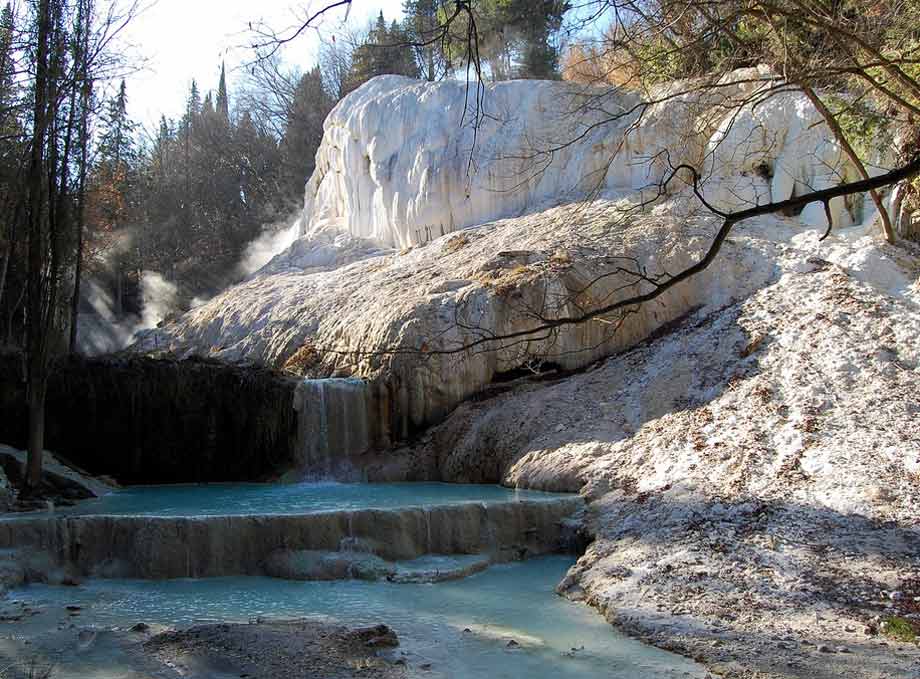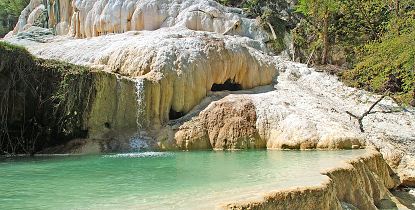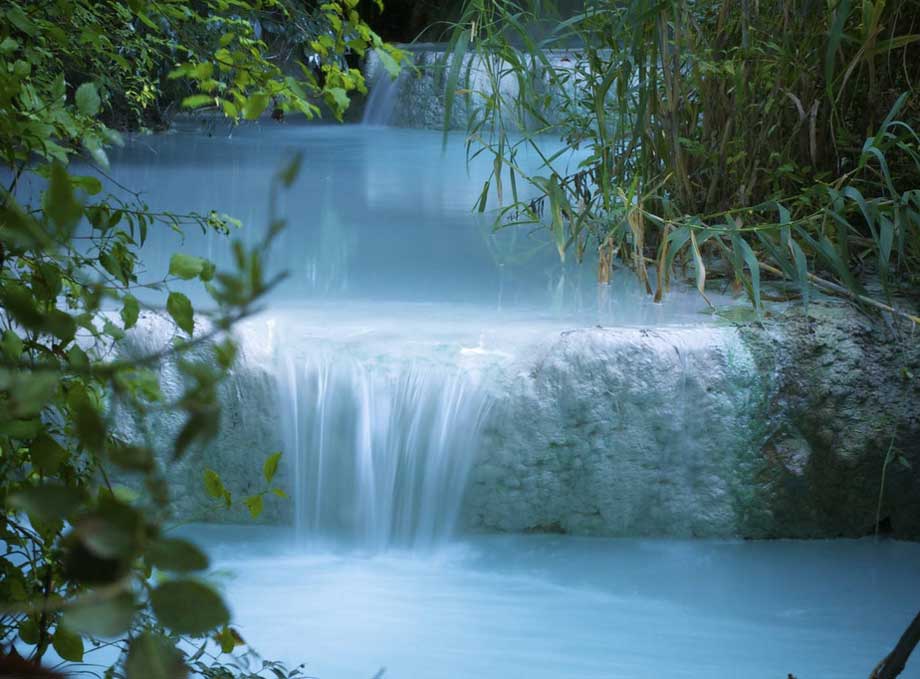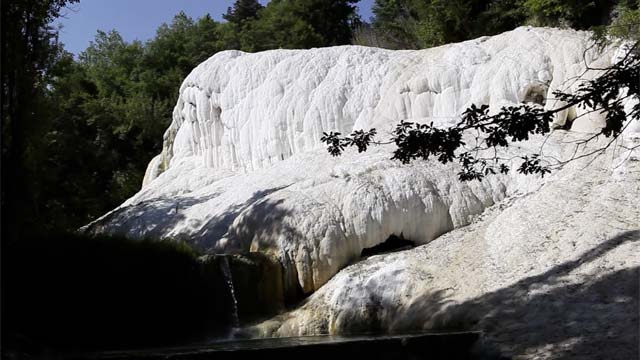Bagni San Filippo
Bagni San Filippo is a district of Castiglione d' Orcia in the province of Siena, Tuscany region of Italy. The name derives from the place are the thermal baths ( Bagni, dt baths) and hl. Philip Benizi.
Geography
The district is located about 9 km south-east of the main town of Castiglione d' Orcia, 53 km southeast of the provincial capital, Siena, approximately 100 km south-east of the regional capital Florence and about 190 km north-west of the Italian capital Rome in the Orcia valley and the river Orcia at 524 meters above sea level and has about 70 inhabitants. Passes close by the Via Francigena ( located on the east ), here link equality with the Via Cassia, and the Torrenti Formone ( east below in the valley located ) and Rondinaia ( flows near the town, coming from Abbadia San Salvatore, a total of 6 km). Nearest places are Campiglia d' Orcia, about 5 km northwest of the town, and Vivo d' Orcia, about 5 km west, both districts of Castiglione d' Orcia. In the southwest, the area borders on Abbadia San Salvatore, about 9 km away.
History
First mentioned was the site of Ratchis, King of the Lombards and founder of the monastery of San Salvatore di Monte Amiata, in the middle of the eighth century as a corte (court ). An earlier presence of the Etruscans in place is considered likely, the presence of the Romans and secured. Written sources mention the Pieve di San Filippo Apostolo in the year 859, mentions more done 1014 and 1067th The city was built around the parish church, which was allocated at the time the monastery of San Salvatore di Monte Amiata. After that, the place managed under the rule of Orvieto, in the 13th century on the counts ( Visconti ) from Campiglia d' Orcia. Thereafter, the Republic of Siena, whose Pope Pius II in 1462 visited the site took over. Lorenzo I de ' Medici was a guest in 1485, when the area was still part of Siena. The Senese Pandolfo Petrucci ruler was in 1500 for the treatment in place. After the defeat of Siena in the 16th century it joined the Grand Duchy of Tuscany. Here stays of Cosimo I de ' Medici from 1566 and of Ferdinando II de' Medici from 1635 are documented. Literally, the place in the comedy Mandragola of Niccolò Machiavelli from the year 1518 is mentioned. The thermal plants originated in 1816 First, the location of the community Abbadia San Salvatore was allocated and in 1867 the district of Castiglione d' Orcia.
Attractions
- Chiesa di San Filippo Benizi, Church, contains a stucco statue of the saint on the main altar and the busts of San Filippo and San Filippo Neri Benizi from the 18th century.
- Fosso Bianco ( White river ), 2 -km-long outflow stream of hot water with the Balena ( Beluga ), a white travertine.
- Grotta di San Filippo Benizi, Grotto of travertine in which Filippo Benizi retired in 1268 to escape the papal election in the conclave of Viterbo, after he was traded himself as a candidate.
- Sorgente del Fosso Bianco, also called Poggetto, thermal spring above the village. Water runs with 48 ° C.
- Sorgente Acqua Santa, also known as Passante, thermal source within the town. The water temperature is 23 ° C, the water itself has a high alkalinity.









